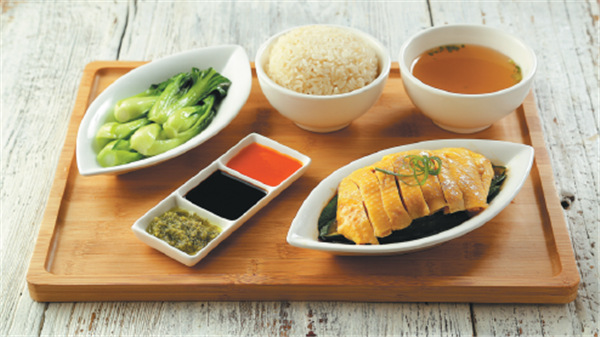The transplantation of a culinary capital


"On average, it takes about two of my workers 10 hours just to make 10 kilograms of chilli sauce. It's very time consuming!"
This self-taught chef's authentic creations have not gone unnoticed. Mok currently has not one or two, but four WeChat groups filled with close to 1,700 customers.
Another self-taught Singaporean chef who shares the same attention to detail as Mok is Joey Cheong, the owner of Umaami Global Kitchen in Shanghai's Jing'an district. Cheong once spent an hour observing a hawker in Singapore cook Hokkien mee-noodles fried in a prawn broth and topped with prawns and squid. He even used his mobile phone to time how long each of the different elements in the dish spent in the wok.
Another crowd favorite is Umaami's kambing soup, a thick and spicy lamb soup that originated from Singapore's Indian Muslim community. Cheong said that this hearty soup is also popular with many locals who enjoy flavors from China's northwest region such as Xinjiang.
Like Eden's Kitchen, many of the ingredients for Umaami's Singaporean dishes are made from scratch. According to Cheong, even the black soy sauce that is served with his Hainanese chicken rice is made from a custom blend of ingredients.
"The dark soy sauce that we eat with chicken rice in Singapore is thick and sweet, and this version is difficult to obtain in China because it is very specific to Teochew culture. So, in order to make this, I caramelise the best rock sugar I can find and blend it with the best soy sauce I can get my hands on," he said.
"I think there's a lot of pride in making things from scratch because then there's a story to tell."
A former advertising professional who decided to turn his passion for cooking into a career about five years ago, Cheong is also known as the only person in the city to have offered a Singaporean buffet brunch every Sunday.
Following a suspension of the buffet-it ran for 18 months-due to the COVID-19 epidemic, Cheong will debut a new Sunday special this month which he dubbed as "tze char omakase". Tze char is a Hokkien term which literally means "cooked food". The term is often used to describe small food stalls that are more casual and affordable than regular restaurants. Omakase is a Japanese term which refers to a meal where the dishes are decided by the chef.
"The tze char omakase is a natural evolution of Umaami's Singapore Heartland Brunch Buffet. Having a tze char meal together with family and friends is one of the quintessential Singapore dining experiences, and we want to share this with the local diners," he said.
"We have decided to do this omakase style as it gives diners the opportunity to try different dishes. People usually order within their comfort zones and this sometimes causes them to miss out on a lot of goodies. Here at Umaami, we believe that food can be a way to explore a new culture."




































